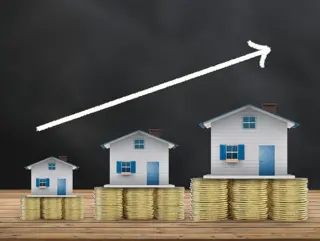Bengaluru Real Estate Prices Show Resilience in 2025
 Bengaluru’s real estate market continues to defy predictions of stagnation, with property prices surging across key areas. Despite debates about potential market corrections, data shows sustained demand driven by the tech sector’s growth and constrained land supply. Recent reports indicate areas like JP Nagar have witnessed property values more than doubling since 2016, underscoring this trend.
Bengaluru’s real estate market continues to defy predictions of stagnation, with property prices surging across key areas. Despite debates about potential market corrections, data shows sustained demand driven by the tech sector’s growth and constrained land supply. Recent reports indicate areas like JP Nagar have witnessed property values more than doubling since 2016, underscoring this trend.
Key Drivers Behind Rising Prices
1. Tech Sector Dominance Bengaluru’s status as India’s Silicon Valley fuels demand for premium housing and commercial spaces. IT professionals and expatriates account for a significant share of homebuyers, particularly in areas like Hosur Road, Electronics City, and Koramangala. The city’s booming shared workspace and gig economy jobs further stimulate residential consumption.
2. Land Scarcity Available developable land in core areas has diminished, pushing prices upward. This crunch is particularly acute in central zones, where supply lags behind housing needs. New launches increasingly cluster in peripheral regions like Devanahalli and Bagalur, where infrastructure development (e.g., Manyata Tech Park expansions) supports accessibility.
3. Strategic Infrastructure Investments Upgrades to transportation networks, such as the Namma Metro extension to Whitefield and Sarjapur Road, have boosted property demands. Significant investments in road connectivity and airports also enhance the appeal of emerging corridors, aligning with VTU Layout and Avalahalli growth trajectories.
High-Demand Zones and Performance
Premium Central Zones Areas like Indiranagar and HSR Layout remain pockets of steep price appreciation, with limited inventory pushing rates up by 10–20% annually. Luxury properties with smart tech integration here now command rates exceeding ₹12,000–15,000 per sq. ft., driven by selective developer focus and bespoke amenities.
Emerging North Bengaluru Sub-markets such as Nelamangala and Bhartiya City are experiencing price hikes of 20–25%, thanks to:
- Proximity to Kempegowda International Airport
- Development of tech parks and logistics hubs
- Improved road connectivity to central business districts
East Bengaluru’s Seller’s Market Localities like Varthur and Panathur Road are seeing rapid development. Metro connectivity and IT cluster spill-over from Whitefield have made these areas top choices for professionals and investors.
Market Dynamics and Future Projections
Sales Momentum Q1 2025 saw 10% YoY growth in residential transactions, with 18,508 units sold. This demand is concentrated in mid-segment projects offering 2–3BHK configurations priced between ₹70–120 lakh.
Luxury Segment Boom High-net-worth individuals and institutional investors are driving 27% YoY growth in luxury housing demand. CAFÉs like Kaikondrahalli and Someshwara Nagar attract bespoke villa developments, targeting ₹2–5 crore+ budgets.
2030 Outlook Industry forecasts indicate a 20–30% price surge in key areas by 2030, with rental yields maintaining 5–8% in prime localities. North Bengaluru is projected to lead this growth, supported by airport-linked economic zones and smart city initiatives.
Strategic Advice for 2025 Buyers
| Investment Type | Recommended Areas | Price Range (per sq. ft) | Key Features |
|---|---|---|---|
| Luxury Homes | Koramangala, JP Nagar | ₹10,000–15,000 | Premium amenities, gated communities |
| Mid-Range Apartments | Sarjapur Road, Panathur | ₹5,800–8,200 | Proximity to IT hubs, metro connectivity |
| Emerging Investments | Devanahalli, Bhoganhalli | ₹3,500–6,000 | Upcoming tech parks, affordable pricing |
Conclusion
Bengaluru’s real estate market remains a high-growth sector, shaped by its role as a global tech capital. While concerns about affordability persist, strategic bets in infrastructure-backed corridors and premium zones offer robust returns. For buyers, prioritizing location and developer track record during the current price cycle is critical to lock in value appreciation opportunities.